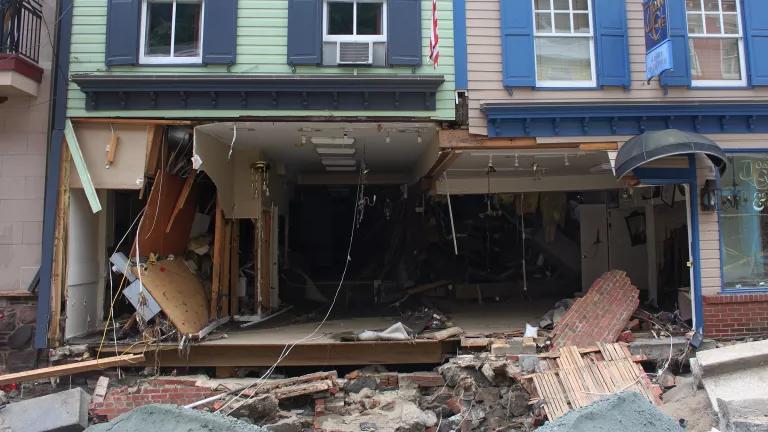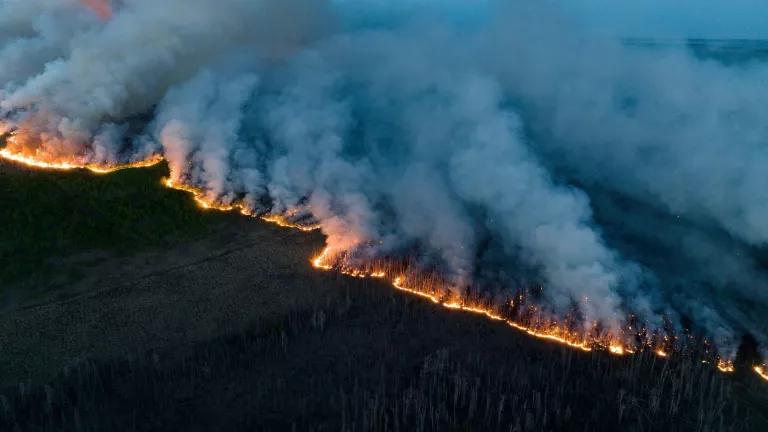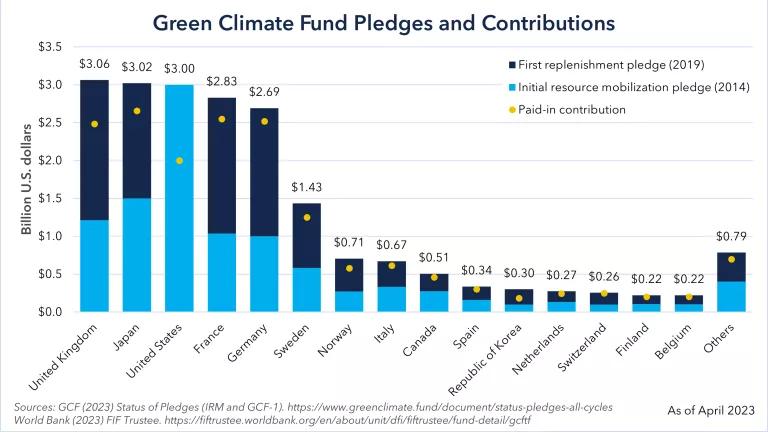
The devastating aftermath of the July 30 flash flood in Ellicott City, Maryland. This is one of many shops affected on Main Street
On Saturday night, Ellicott City, Maryland, a historic mill town in Howard County just 30 miles north of Washington, DC, was devastated by severe flash flooding. The city’s idyllic thoroughfare, known for its antique shops, art studios, and restaurants was left in ruins. More than six inches of rain fell within two hours, damaging 200 buildings, washing away cars, and most tragically, claiming two lives. Unfortunately, as the climate changes, extreme precipitation events, like the one that soaked Ellicott City, are projected to occur more frequently. As such, our approach to flood preparation and resilience needs to change.
While individual storms cannot be directly attributed to climate change, climate change does increase the punch that they pack. According to the 2014 National Climate Assessment, the amount of rain falling in very heavy precipitation events has been significantly above average since the early 1990s. The heaviest rain events are becoming heavier and are occurring more frequently. The Ellicott City storm was at least the ninth "1-in-1,000" year rain event across the United States since 2010. Within in the past 12 months, West Virginia, South Carolina, and Texas all have experienced 1-in-1000 year rain events with devastating consequences.
The conventional approach to disaster preparation is no longer sufficient. The storms of our past are no longer reliable indicators of the storms of our future. We must account for future climate impacts in the way we design and build our publically-funded infrastructure—like our bridges, schools, and wastewater treatments plants—to avoid placing people and property in harm’s way.
The recent events in Ellicott City serve as a good reminder of why accounting for heavier and more frequent rain events is becoming a necessity. In terms of flood mitigation, Howard County is highly progressive. The county no longer allows new construction in the 100-year floodplain, and for all other construction, a two-foot freeboard standard is required. Further, Howard County encourages existing buildings within the 100- year floodplain to pursue flood protection measures. Overall, Howard County is well ahead of the majority of the country concerning flood preparation.
However, as the climate changes, and as Saturday’s storm demonstrated, even these protective measures may not be enough if climate impacts go unaccounted in our disaster planning. Continuing to design our publically-funded infrastructure, without accounting for future conditions, like a greater occurrence of heavy rain events, will increase the risk of having to repair and rebuild that infrastructure over and over again as disasters, like more intense rain storms, strike. The result will be an increase in the amount of post-disaster recovery costs borne by federal, state, and local governments.
And flooding already exacts a heavy financial toll on the nation. Between 1980 and 2013, the United States suffered more than $260 billion in flood-related damages. Additionally, flooding accounts for approximately 85% of all disaster declarations. From 1998 to 2014, $48.6 billion in FEMA Public Assistance Grants were spent in the wake of floods to repair or replace public buildings ($12.6 billion), public utilities ($7.4 billion), roads and bridges ($5.5 billion), and water-control facilities like levees, dams, and pumps ($1 billion), with the remainder spent on clean-up and emergency actions. Further, FEMA’s Public Assistance Program represents only a small portion of the total amount the federal government spent on rebuilding after flood-related natural disasters.
The evidence of climate change is all around us. We must adapt. We should start by requiring that our Federally-funded infrastructure is better built to withstand the storms of the future. Not only will it increase our safety, but it will reduce the amount of money we spend on post-disaster recovery. It is fiscally-irresponsible to build infrastructure that we know, given future climate projections, will only be flooded repeatedly. Luckily, the Obama Administration has acted to protect our tax-payer funded infrastructure by revising federal flood protection standards.
Via executive order, President Obama issued a new flood protection standard for federally-funded infrastructure, one of the most important recent federal policies changes to adapt the nation to a changing climate. The new flood protection standard, known as the Federal Flood Risk Management Standard, was developed by the President's State, Local, and Tribal Task Force on Climate Change Preparedness and Resilience. An extensive public comment process with listening sessions held throughout the country informed the plans for its implementation.
The Standard provides a pivotal framework for reducing our nation's exposure to flood risk. Under the Standard, federal agencies must use more protective design standards when making decisions about what and where to build, or in deciding which projects can receive federal funding. The Standard established flexible options for federal agencies to account for future flood risk when funding construction projects. One of the most important is the Climate-Informed Science Approach. Under this approach, Federal agencies must use the best available climate science data to determine future flood conditions over the lifetime of the proposed structure, and elevate or flood-proof it above that future flood level.
At present, Federal agencies are moving to incorporate the federal flood protection standard into their regulations and operating procedures. Not only will this process provide more opportunity for public input, but it will ensure that our Federal agencies are taking future flood risk and climate change in general, more seriously.
The climate is changing, and so should the manner in which we design and build our publicly-funded infrastructure. Accounting for the impacts of climate change in the design and construction of federally-funded infrastructure will help improve the nation’s resilience to flooding, saving tax-payer dollars and reducing harm to people and property.




